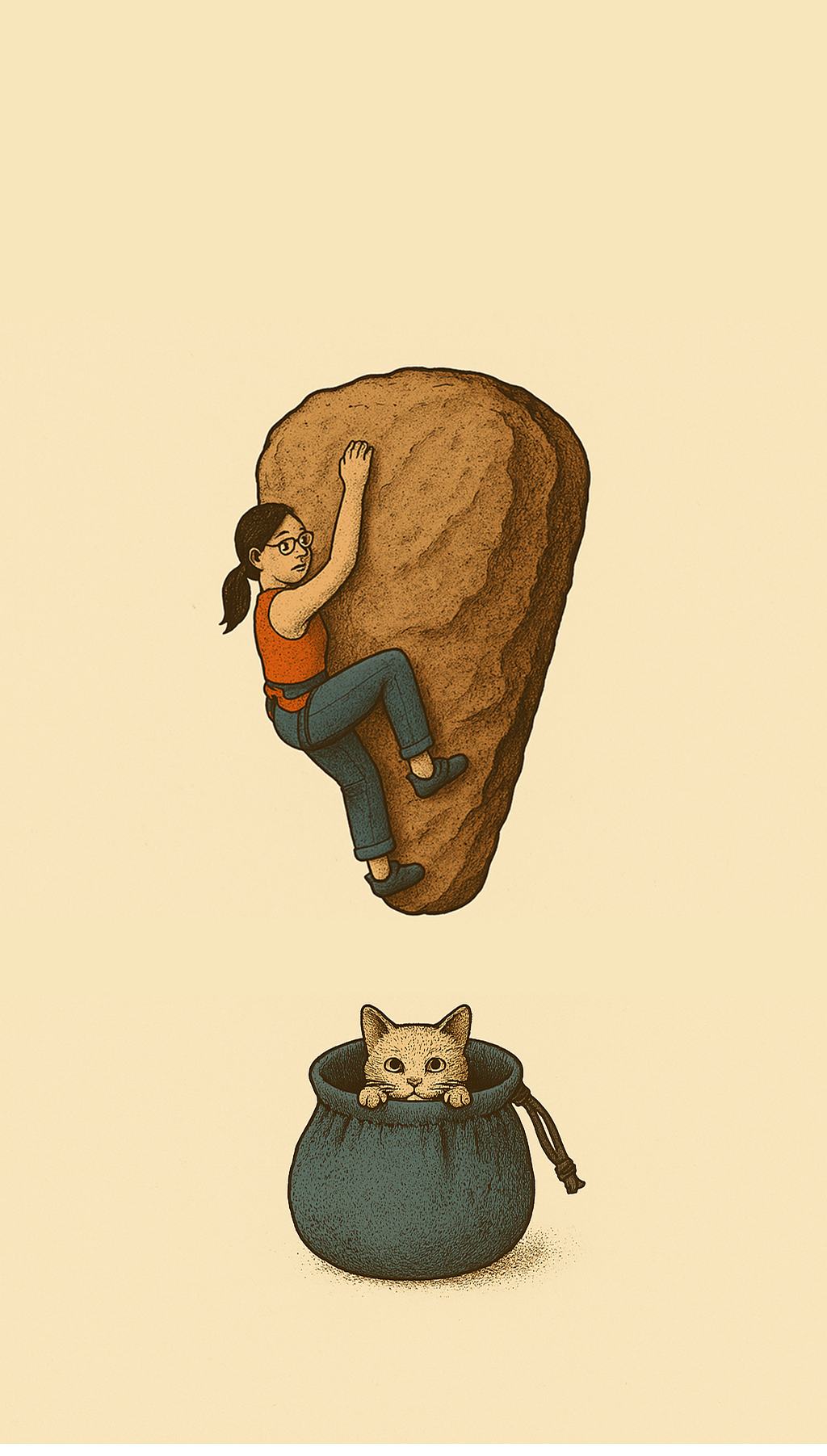Rewiring Technique Through Pet Connection: How Furry Friends Can Help You Finesse Your Climbing
Purpose:
To use the calming act of petting an animal as training for the same relaxed, efficient, hip-driven movement climbing demands—by practicing it in a safe, emotionally rewarding context that ensures real learning, not stress-based coping.
Why This Works
We don’t learn our best technique while stressed.
We survive while stressed.
Bent arms, over-gripping, jerky moves?
Often these aren’t just poor technique—they’re adaptations to threat.
If you only try to fix them on the wall, in high-stakes moments, you’re asking your brain to do two things at once:
Learn something new.
Manage fear or uncertainty.
That rarely works well.
But our nervous system learns best in safe, meaningful contexts.
When you pet a cat or dog, you’re calm, connected, and emotionally engaged. That emotional salience flags what you’re practicing as important—making it more memorable and transferable later.
It’s also naturally rewarding. You don’t have to force yourself to pay attention or to repeat it—it feels good to do.
By learning relaxed, hip-driven, straight-arm movement in that state, you’re telling your nervous system:
“This movement is safe. This movement feels good. This movement is worth remembering.”
That’s what makes it available even under pressure on the wall.
The Drill
1. Choose Your Moment
Quiet time with your cat or dog.
Relaxed. Unhurried.
Comfortable for both of you.
2. Set Your Intention
Keep arms as straight as you can comfortably manage.
Initiate reach and contact from your hips.
Use knees, ankles, and spine flexion/extension to move in and out of range—not just shoulders and elbows.
3. Observe Without Correcting
Notice when you want to bend or jerk your arms.
Ask: Does it coincide with excitement? Impatience? Worry about “getting it right”?
Simply notice these moments. Awareness is the first step to change.
4. Deepen Connection
Pay attention to your pet’s feedback.
Slow down enough to feel subtle responses—purring, breathing, leaning in.
Let this feedback encourage calm, intentional movement.
5. Repeat with Care
Move in and out with your hips.
Practice smooth, balanced weight shifts.
Maintain gentle, consistent contact with straight arms where possible.
Takeaway for Climbing
By linking these movement patterns with calm, rewarding experiences, you’re encoding them as safe and meaningful.
You’re giving yourself a memory of movement that feels good—one you can call on even when things get hard on the wall.
So when you need it most, your body knows exactly what to do.
Because real technique change isn’t just mechanical.
It’s emotional, relational, human.
